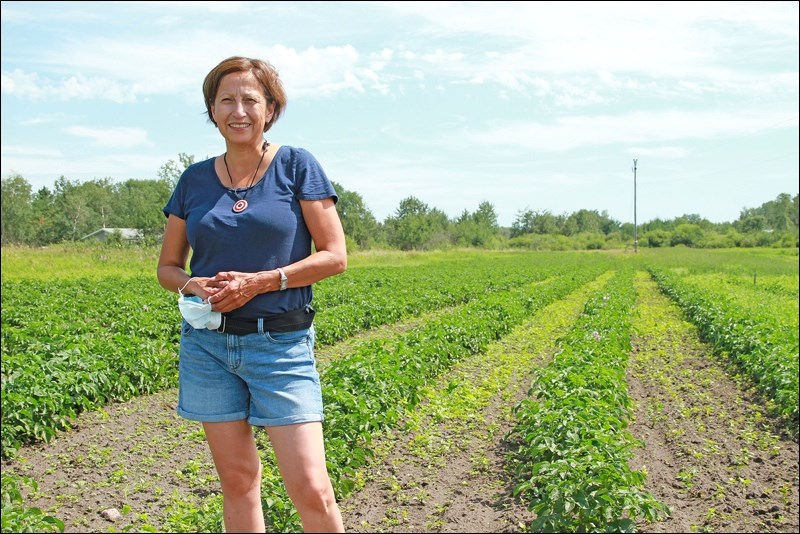Dorothy Ahenakew has been the food security coordinator for the Ahtahkakoop community Garden Initiative Project for the past three years with help from the Ahtahkakoop band, the Battlefords Agency Tribal Chiefs (BATC), and Canadian Feed the Children. Not only are they growing food for 2,000 community members, but they are also trying to make their community self-sufficient, she says.
Ahenakew is not only working hard to feed her community but also to promote gardening for the entire Ahtahkakoop community. During the school year, she’ll bring out grades from the Ahtahkakoop Cree Nation High School to help in the garden and she offers expertise and seeds to anyone in the community who wants to start their own garden at their homes. Ahtahkakoop band councillor Pat Isbister says she hopes all of Ahenakew’s hard work starts a lifelong love of gardening, especially in young people.
According to Canadian Feed the Children, who partner with Indigenous communities across the country to support community-led food programs, Indigenous children are 2.5 times more likely to live in poverty and, “food security for children and adults living on and off-reserve ranges from 21 per cent to 83 per cent, compared to 3 per cent to 9 per cent for Canadians,” according to their website.
For Ahenakew, she doesn’t want to be reliant on farmers or grocery stores for produce.
“If we have our food, growing ourselves and distributed to our people, that’s food security.”
But there have been some challenges along the way. Storage of produce has been an issue, says Ahenakew. Last year, she organized with the local school so each student got to take a 10-pound bag of potatoes home with them. They just didn’t have anywhere else to store the potatoes, she says.
The program is growing and come fall, the garden will hopefully have a root cellar in place so vegetables can be stored.
Keeping a garden large enough to feed 2,000 people is a lot of work, but Ahenakew does have help with the garden employing six full-time employees through the Youth Employment Program and the BATC.
“I’m their mentor and so I’m teaching them everything they need to know about growing a garden.”
For the community’s most vulnerable, including elders and those living on social assistance, this community garden means better access to affordable healthy food.
For Ahtahkakoop band administrator, Carmen Little, Ahenakew’s work is about more than just food but an overall holistic approach to a healthy community.
“A lot of the programming that we put on, not only with our health center but within the First Nation. At our school we do a nutrition program so we’re trying to provide a healthy snack or a healthy meal to the kids in school during the school days ... a meal that you can grow a healthy child on. You got to feed the mind to feed the growth in their education.”
A diabetic health worker in the community sees a challenge in giving people a reason to get active. Ahenakew says gardening can give people a reason to get outside and get active while also providing themselves with healthy meal options.
Providing for the needs of the community, from basic vegetable needs to providing vegetables for community events and the weekly soup kitchen to being able to sell the vegetables at a more competitive rate, Little sees the program expanding to meet all the needs of the community. With more expansions coming to the community garden, Little is excited for the day they have their own greenhouse and expand their operation to grow vegetables to sell at a reduced rate. Not only will that cut the costs of fresh vegetables for the community and make healthy food more affordable, it will also support the local business.




